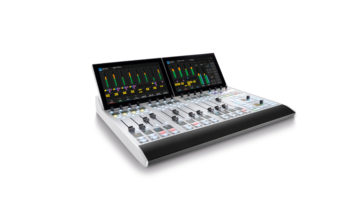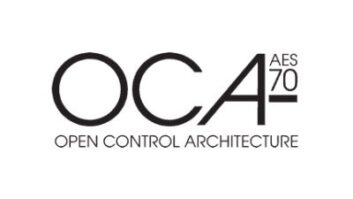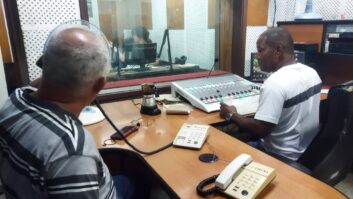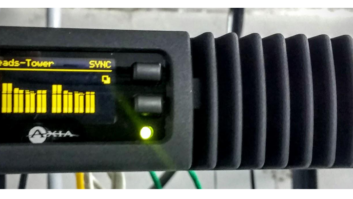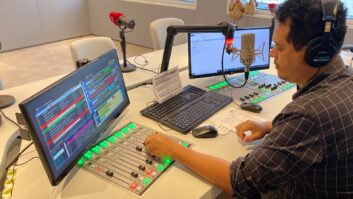KITCHENER, Ont. — Choosing a mixing console is one of the more important decisions in a new studio buildout, and that was certainly the case for our new studio in Kitchener, Ont., which went live on Friday, June 3.
It had been a while since we had actually made that decision — at least five years, as we were still using analog Ward-Beck Renaissance R2K audio consoles. A lot had changed since then. Not only was our talent much more savvy about computerized systems, but networking ranked at the top of the list for console considerations.
We were still concerned with how well the console would hold up over time because we do keep our consoles for a good many years, as previously noted. But cabling and other networking details were top of the list, especially because we planned to network eventually into Rogers Communications’ main studios in Toronto, and our AM is a full-service news/talk station with lots of collaborative activity taking place by a larger staff from 5 a.m. to 7 p.m. every day.

The “news wheel” and its Wheatstone L-12 consoles. We needed our new consoles to be collaborative and flexible in order to service our two FMs, AC 96.7 and Country 106.7, and busy AM, 570News.
After reviewing many options and models, we decided on Wheatstone’s LX-24 control surface console for the three main control rooms, and two Wheatstone L-12s for the main news control studio. We liked the consoles and the networking system that came with, the WheatNet-IP audio network, which made it easy to cross-connect the consoles for shared control, resources and overall collaboration between talent.
The two L-12s are tied together, angled side by side in what we call the news wheel control studios, where we have a staff of at least six doing news, sports — both local and major league — and talk. The L-12 is a simple console with lots of features, including bus-minus serviceable faders and event presets just to name a few. When one of our talents is on the air, the other is going through scripts and collecting the next broadcast.
At the top of the hour, both are on the air. Off of the news wheel room we have separate news workstations that use a virtual console we set-up using Wheatstone’s Screen Builder program with the PC-XY routing application and turret hardware control modules. Screen Builder proved to be a good option for us because we can program that surface any way we like using drag-and-drop menus for controlling mic presets, for example. Five primary faders are used for mic, local computer, telephone and PC-XY 1 and 2, which can be any available source in WheatNet. The turret hardware is used to control microphone, talkback, source monitoring and live-to-air for the two FMs and one AM station with the push of a button.
Consoles in the facility are able to share all of the same resources and presets, which make them highly collaborative. We can tie the three main control rooms together or switch on or off any of the three.
The flexibility is unbelievable. Being able to connect something is no longer a cable from point A to point B. It’s the spin of the dial, the view of an LCD display.
Thanks to G.S. Broadcast Technical Services for help with the design, programming and implementation of the Wheatstone product and studio build.
For more information, contact Jay Tyler at Wheatstone in North Carolina at (252) 638-7000 or visit www.wheatstone.com.





